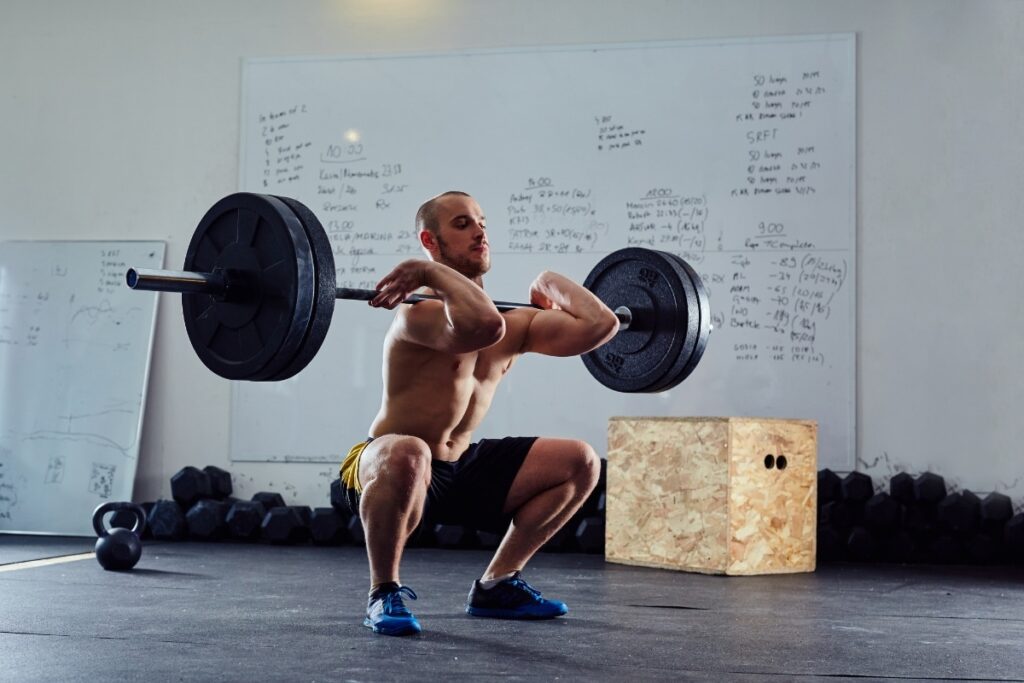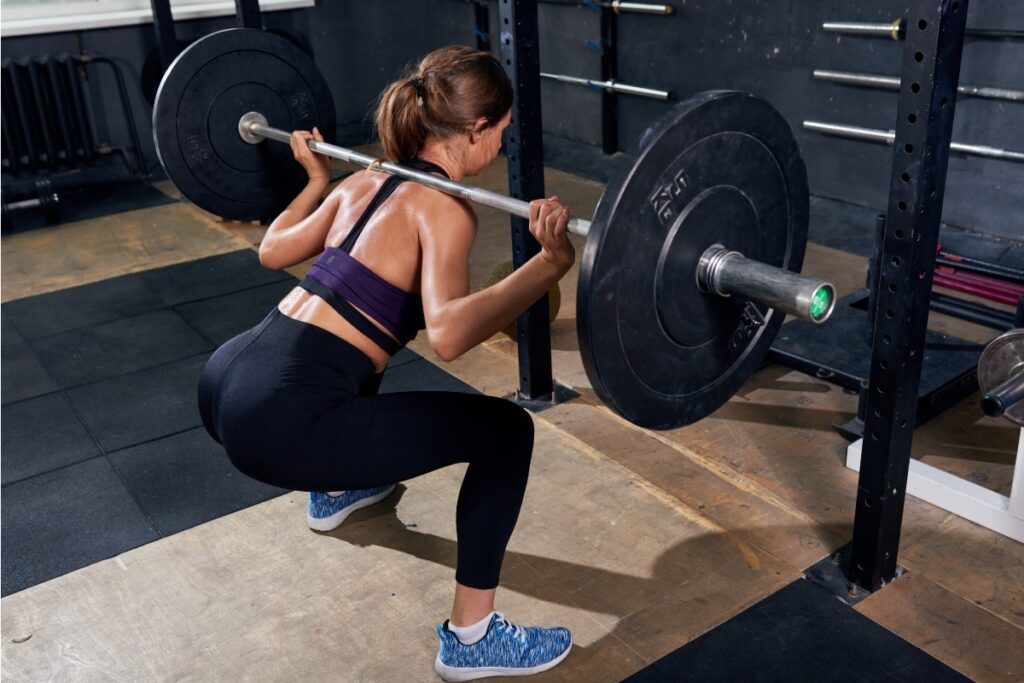Do you want to learn how to complete the barbell front squat to build stronger leg muscles? The barbell front squat is one of the most efficient and effective exercises for building strength and power. It targets the muscles of the legs, glutes, and core while engaging several stabilizer muscles throughout the body.
Three Important Things About the Barbell Front Squat
This comprehensive guide will walk you through the proper form, execution, and variations of this foundational movement.
The Proper Form
The first step in mastering the barbell front squat is learning how to execute the move properly. Begin by setting up a barbell on a rack at about shoulder height. Next step underneath the bar, rest it across your chest and collarbone with your arms crossed in front of you. Next, grip the barbell with an overhand grip using your index fingers just outside your shoulders and your elbows pointed forward.
Your feet should be slightly wider than hip-width apart, with your toes pointing slightly outward. Keeping your back straight, drive through your heels as you push up from the rack stand until you reach a standing position. This is where you will begin each rep.
Execution
From here, lower yourself into a squat position by pushing your hips back and bending at the knees until they reach 90 degrees or just before they become parallel to the floor. As you do this, keep your weight centered on your heels and keep your core tight and engaged throughout the entire movement.
Maintain a neutral spine position from start to finish. This can be achieved by looking forward. Where the head goes, the body must follow. Once you reach parallel or below parallel, press through the heels to return to a standing position before starting the next rep.
Variations
Once you have mastered the proper form for the classic barbell front squat, several variations can help make this move from essential to advanced levels quickly. Some options include adding pauses during reps (e.g., pausing at mid-squat), single-leg squats (with or without weight), tempo squats (slowing down both parts of each rep), sumo squats (squatting with a wider stance), or goblet squats (holding a dumbbell instead of a barbell).
All these variations help different challenge areas of strength while staying true to the foundational principles behind barbell front squats—which makes them excellent tools for any level lifter looking to take their workout routine up a notch!
Conclusion of a Comprehensive Guide to the Barbell Front Squat
Barbell front squats are incredibly effective in targeting multiple muscle groups in one exercise while also developing core stability and overall strength and power. With mastery over correct form comes access to limitless variations, which allow even more challenging areas like balance and coordination to be addressed! So whether you’re looking for something easy enough for beginners or hard enough for experts, give barbell front squats a try today!
If you or someone you know is considering bodybuilding, share this article on Facebook or Twitter so that others can learn more about building muscle.




